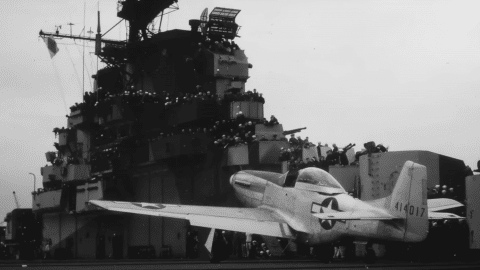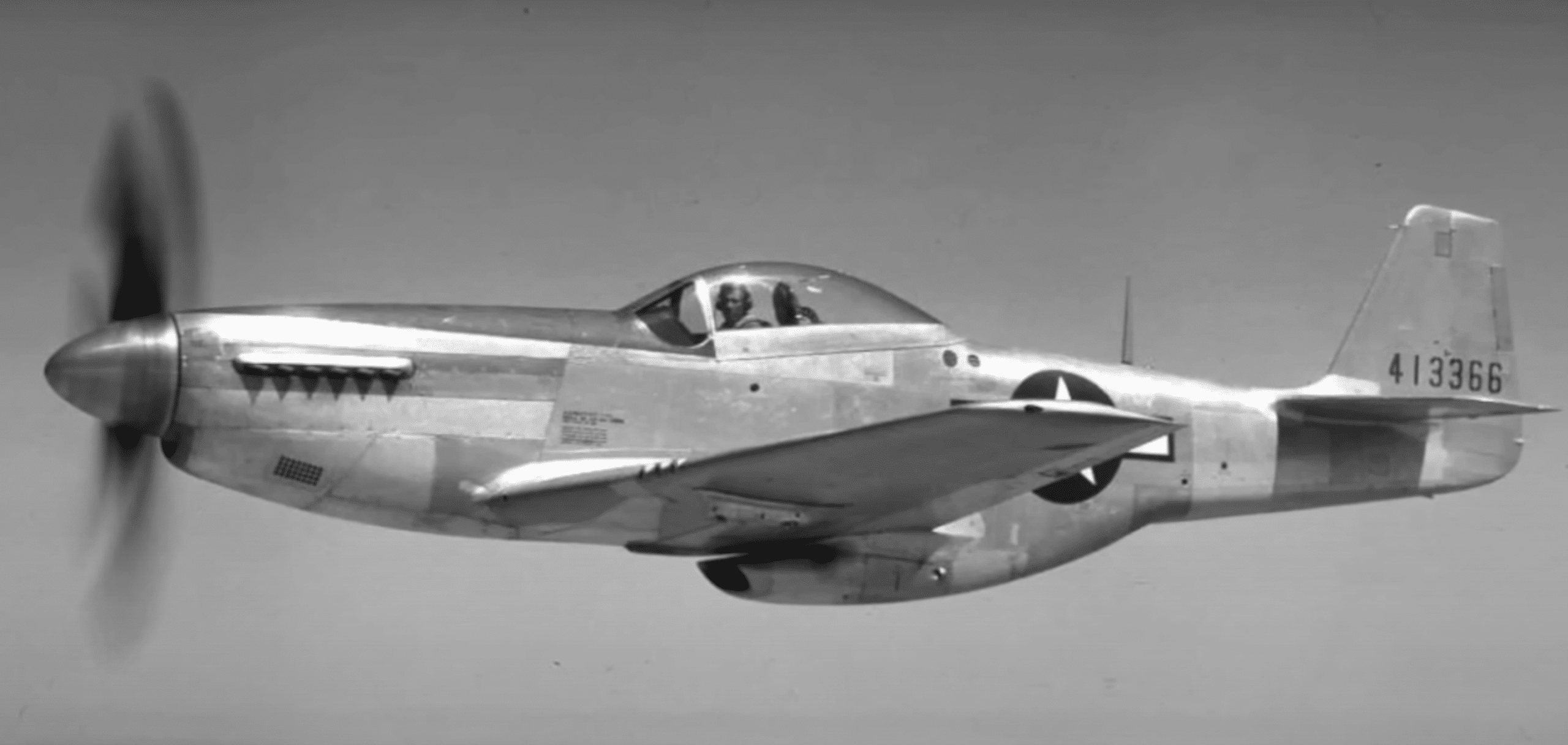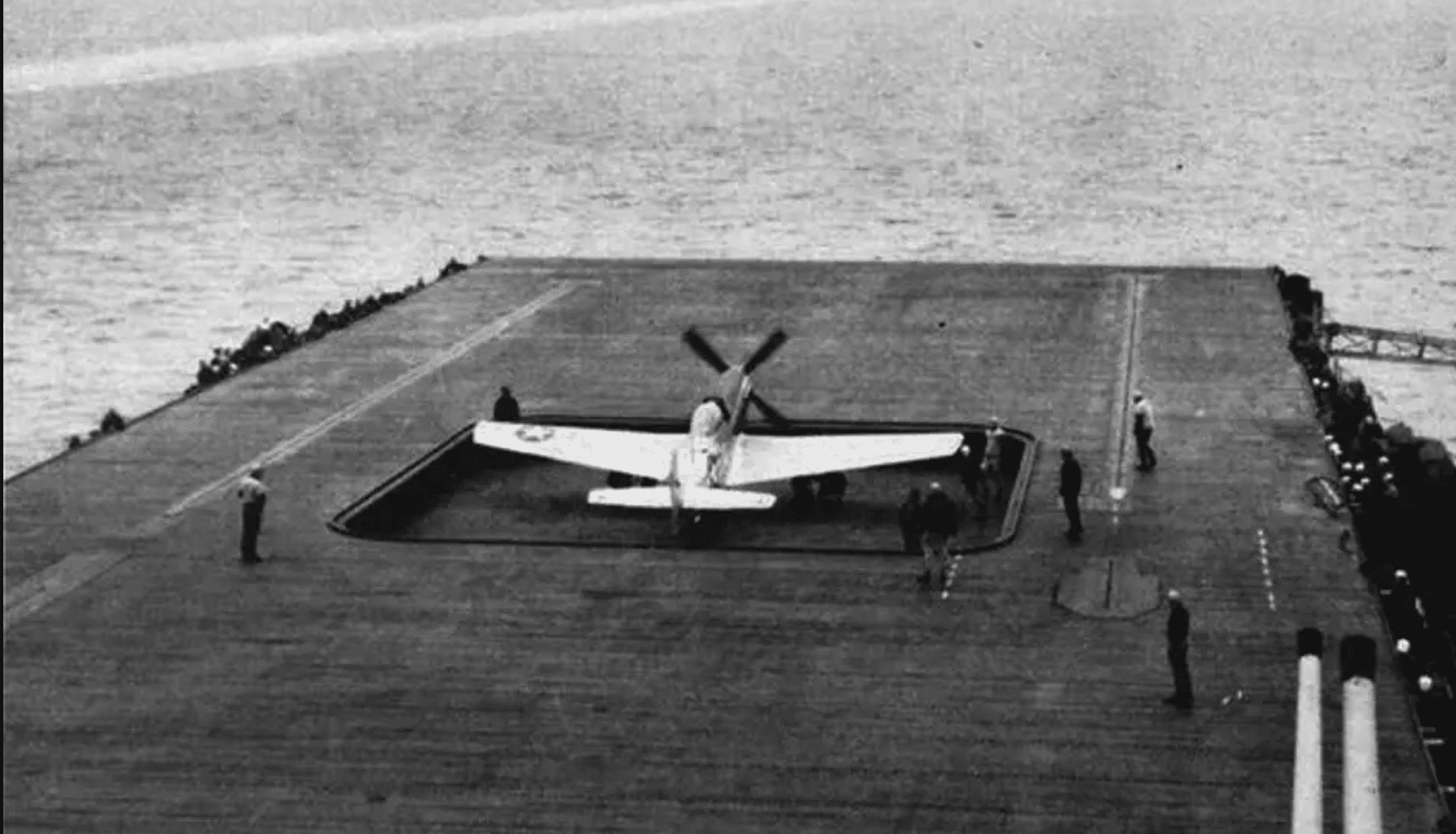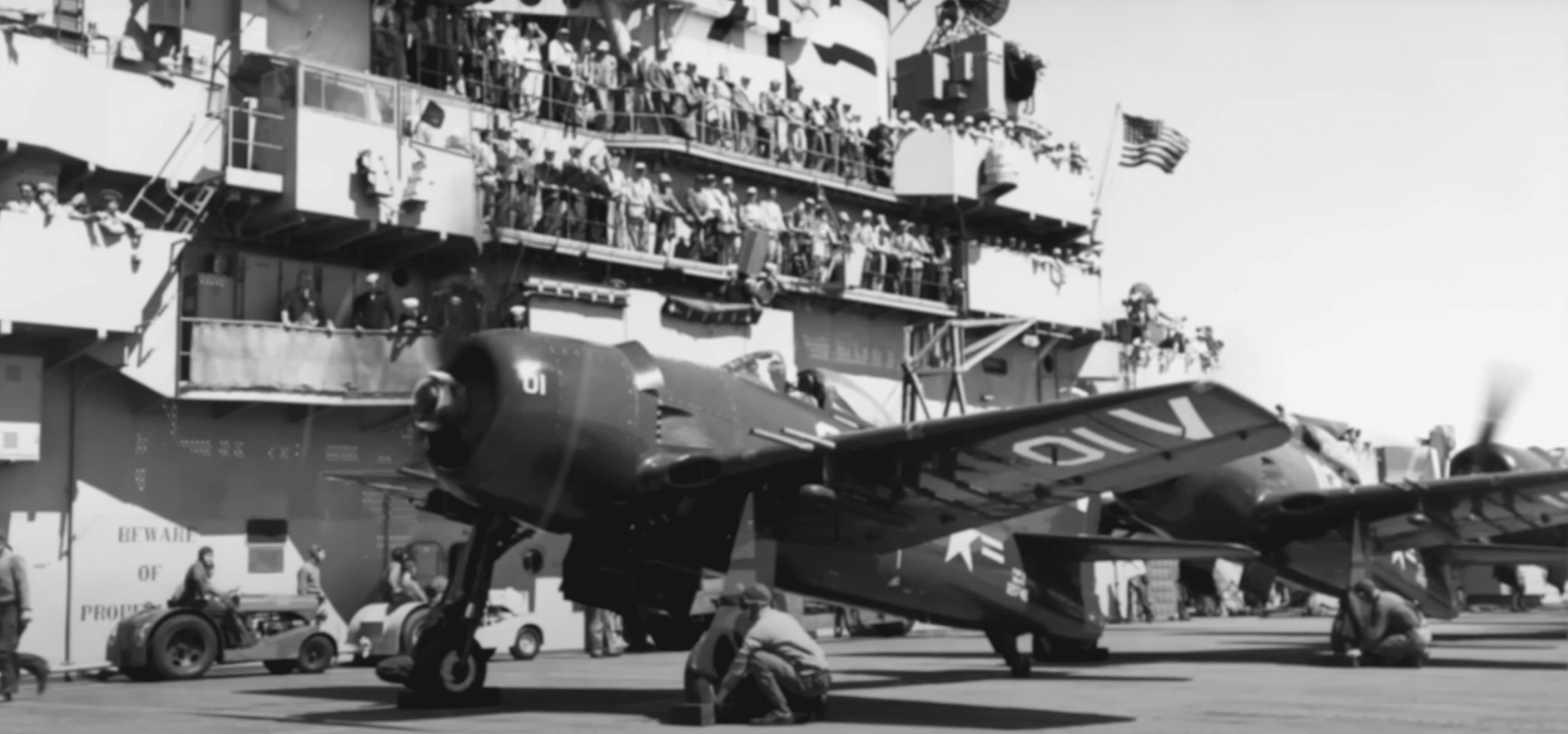
YouTube / History X
The P-51 Mustang was America’s premiere land-based fighter of WWII. Nearly 15,000 of these were producing during the span of the war, with the US Navy keeping a close eye on its development every step of the way.
Good news would come upon them in 1944, when they acquired a P-51D for carrier evaluation. This new Mustang was fitted with an arresting hook attached to a reinforced bulkhead behind the tail wheel.

Its tires were also replaced with special high-pressure ones, and included a catapult hook between its main landing gear.
Testing of the Navy variant was done at Mustin Field, near Philadelphia, in September 1944.
One modified P-51 Mustang, with serial number #44-14017, was re-designated to ETF-51D – with some documents referencing it as the “Sea Horse”.

On November 15, 1944, at 12:20PM, Lt. Robert Elder of the US Navy made the first carrier landing of the Mustang using #44-14017. He followed this up with three landings and four takeoffs, all of which were successful.
The modified Mustang landed on the USS Shari-La aircraft carrier with no problems, except its different stall speed.
Elder knew the Mustang felt sluggish and was on the verge of a stall as it was coming to land on the carrier. According to Bob Kettenheim, a Historian of the USS Shangri-La Association, Elder was within eight knots of stalling the Mustang – meaning it simply wasn’t built for carrier landings.

Luckily, the F8F Bearcat was coming out of the production line at the same time. The Bearcats were extremely high-performing aircraft that could outfly anything, even the Mustang. And so, the carrier-based version of the Mustang was never pursued after the tests.